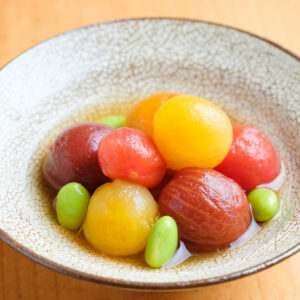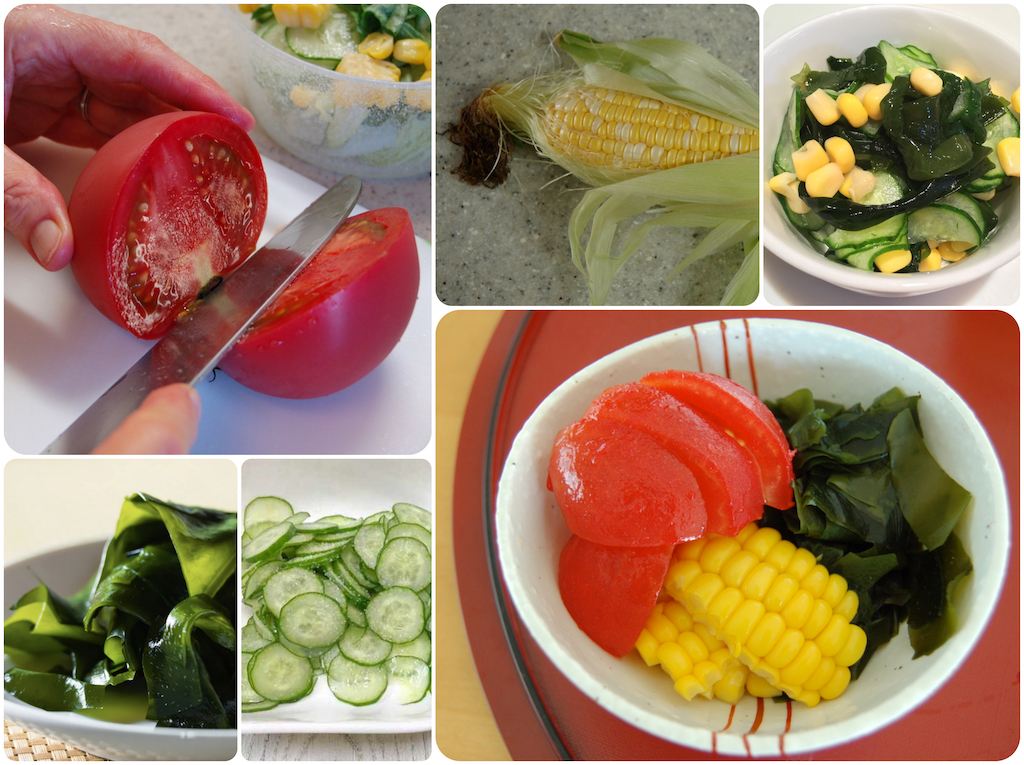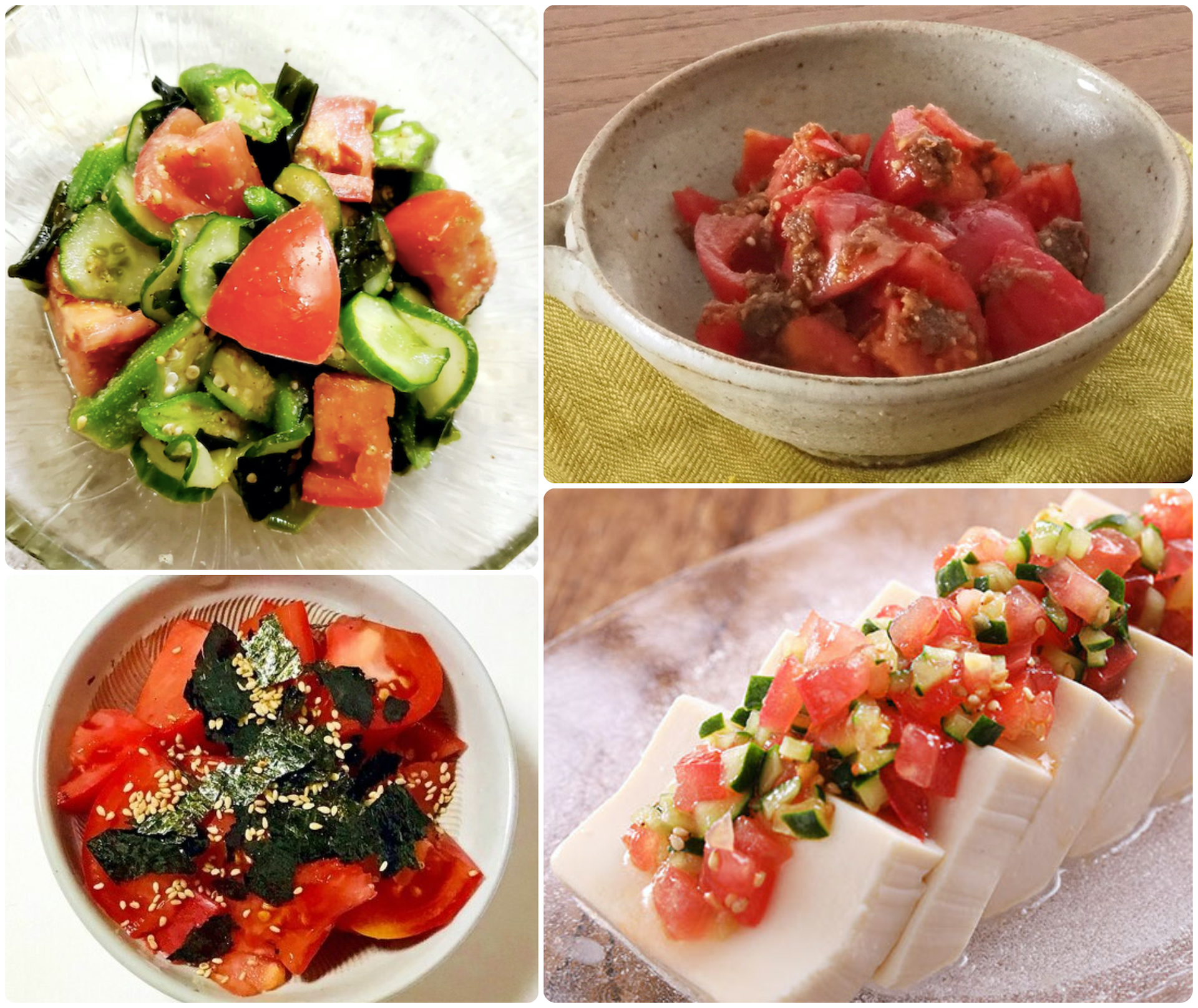
Kitchen Culture Cooking Club
EXPLORE and PRACTICE Japanese cooking in your own kitchenAbout Kitchen Culture Cooking Club
Welcome to the Kitchen Culture Cooking Club, a community space providing encouragement to those who want to EXPLORE and PRACTICE Japan’s washoku wisdom in their own kitchens.
To facilitate this, themed projects will be posted to this page periodically. Project Assignments and links to relevant reference material stored on this site will be posted to this page. Anyone, anywhere in the world, with a sincere interest in Japanese food culture is welcome to browse the contents of this page and then replicate the themed project in their own kitchen.
For those who wish to display-and-discuss their projects with like-minded people, I invite you to join the KITCHEN CULTURE Cooking Club Facebook Group (formerly the TSUDOI Project), an interactive community space.
PROJECT Tomato Salad
TOMATOES combine well with both land and sea vegetables, and with cold noodles too, to make a variety of SALADS. This PROJECT Tomato Salad is about creating your own “house” salad featuring tomatoes.
To start you off, here is a recipe for enjoying tomatoes OHITASHI-style


TOMATOES and COLD NOODLES
Tomatoes and cold noodles are a winning combination. Find information and inspiration in the posts devoted to:

TOMATO, CORN and WAKAMÉ
This combination of land and sea veggies makes a terrific salad, a summertime favorite in Japan.
Here is a primer on using fresh and/or dried calcium-rich wakamé (Undaria pinnatifida; a type of algae). DOWNLOAD Anatomy of Wakamé.

TOMATO, TŌFU, OKRA, BONITO FLAKES and NORI
In Japan, tomatoes are often paired with tōfu in a dish known as hiya yakko.
Bonito flakes (katsuo-bushi also known as okaka) are often used to garnish fresh or briefly blanched vegetables. The fish flakes will be more smoky-aromatic if roasted in a dry skillet before crushing them.
Use this post devoted to okra to help you prepare it well.
Plain, or flavored (aji-tsuke) nori can be crumpled and sprinkled on top of tomatoes — a tart sesame-soy dressing goes well with this. Or, make nori tsukudani and use it as a sauce or dressing.
Recipes and Resources
Stock (Dashi)
Dashi stock is essential to making soups and simmered or stewed dishes. Dashi is also used when making many egg dishes and all sorts of sauces, dips and dressings. Using good dashi will make a noticeable difference in the outcome of so many dishes you prepare.
Click to download recipes for (vegan) Kelp Alone Stock or Standard Sea Stock + Smoky Sea Stock
How to Cook Rice
In Japanese, the word for cooked rice, ご飯 GOHAN, is the same as the word for a meal, ご飯 GOHAN. Indeed rice is central to the meal. Download the Rice with Mixed Grains recipe.
How to Prepare Sushi Rice
Sushi dishes are made with rice that has been seasoned (with sweetened vinegar) AFTER being cooked. Download the Classic Sushi Rice recipe.
Quick Pickles
The Japanese enjoy a wide variety of tsukémono pickles, many can be assembled quickly and are ready to eat within a short time.
Download a recipe for Quick-Fix Hakusai Cabbage.
Cold Noodles Part One: SŌMEN
Survival strategy for hot, humid days: Chilled Sōmen Noodles-on-the-rocks! DOWNLOAD information on buying, storing and cooking sōmen and serving the noodles.© Photo by Leigh Beisch Styling by Karen Shinto ネバネバそうめんSlithery Sōmen Noodles Mouth feel (the way a food...
Rainy Season Kitchen
RAINY SEASON KITCHEN TSUYU (梅雨 literally, "plum rain") comes to the Japanese archipelago every year as spring turns to summer. The constant dampness of tsuyu encourages the growth of kabi (mildew, and molds) requiring a strategy (taisaku 対策) ... and diligence...
HATSU-GATSUO
初鰹 HATSU-GATSUO First Catch of the Season Japan’s seasonal sensibility is always on display at table; here the transition from spring into early summer is celebrated with hatsu-gatsuo (skipjack tuna (Katsuwonus pelamis) prepared tataki-style. Whole loins of katsuo...
Green Tea
Green Teas 緑茶 RYOKU CHA Green teas are green because enzymes responsible for oxidization have been prevented from doing their (dark and discoloring) work. The Japanese halt oxidation by steaming freshly picked leaves, while the Chinese typically pan-fire or roast tea...




